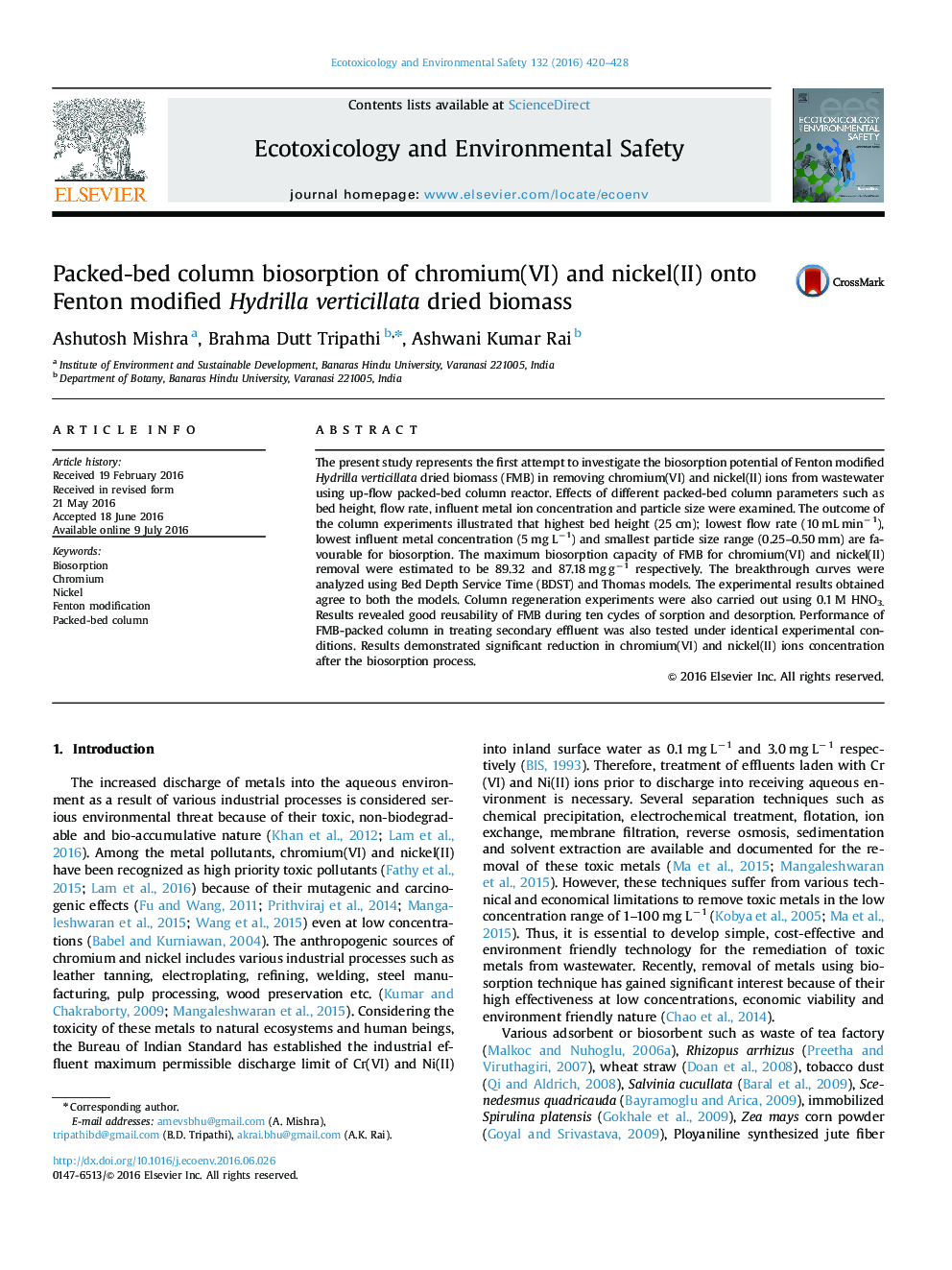| Article ID | Journal | Published Year | Pages | File Type |
|---|---|---|---|---|
| 4419103 | Ecotoxicology and Environmental Safety | 2016 | 9 Pages |
•New renewable biosorbent for chromium(VI) and nickel(II) removal was presented.•Biosorbent was modified using Fenton reagent.•Continuous removal was achieved by up-flow packed-bed column.•Results obtained agree to the BDST and Thomas model.•FMB column also showed good applicability in treating real wastewater samples.
The present study represents the first attempt to investigate the biosorption potential of Fenton modified Hydrilla verticillata dried biomass (FMB) in removing chromium(VI) and nickel(II) ions from wastewater using up-flow packed-bed column reactor. Effects of different packed-bed column parameters such as bed height, flow rate, influent metal ion concentration and particle size were examined. The outcome of the column experiments illustrated that highest bed height (25 cm); lowest flow rate (10 mL min−1), lowest influent metal concentration (5 mg L−1) and smallest particle size range (0.25–0.50 mm) are favourable for biosorption. The maximum biosorption capacity of FMB for chromium(VI) and nickel(II) removal were estimated to be 89.32 and 87.18 mg g−1 respectively. The breakthrough curves were analyzed using Bed Depth Service Time (BDST) and Thomas models. The experimental results obtained agree to both the models. Column regeneration experiments were also carried out using 0.1 M HNO3. Results revealed good reusability of FMB during ten cycles of sorption and desorption. Performance of FMB-packed column in treating secondary effluent was also tested under identical experimental conditions. Results demonstrated significant reduction in chromium(VI) and nickel(II) ions concentration after the biosorption process.
